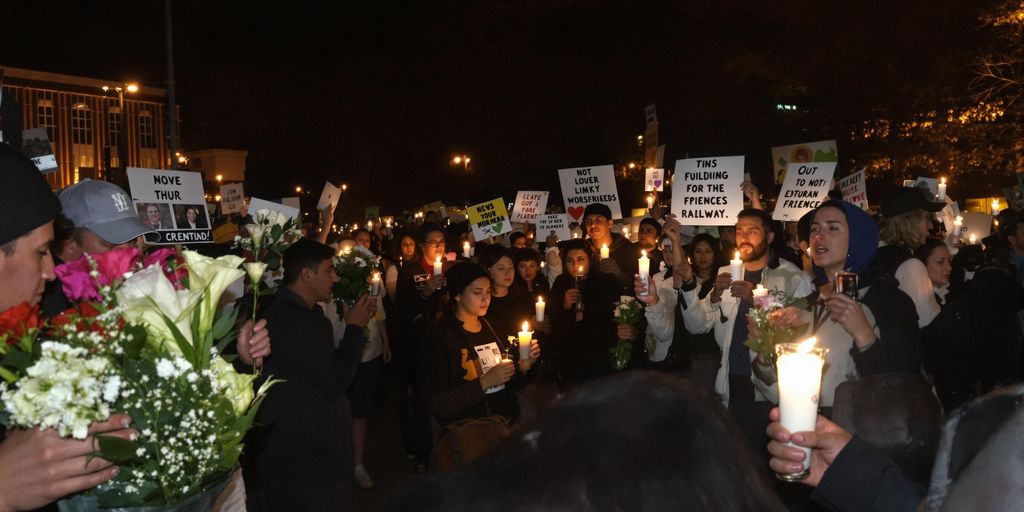Thousands of demonstrators took to the streets in Kragujevac, Serbia, on February 15, 2025, to demand justice for the victims of a deadly railway disaster that occurred in November 2024. The protests, fueled by widespread anger over government corruption and negligence, have become the largest anti-government movement in years, posing a significant challenge to President Aleksandar Vučić’s administration.
Key Takeaways
- Massive Turnout: Tens of thousands of students and citizens participated in the protests, marking a significant escalation in public dissent against the government.
- Symbolic Actions: Protesters held 15 minutes of silence and planned to blockade a major boulevard for 15 hours and 15 minutes, symbolizing the 15 lives lost in the disaster.
- Government Accountability: Demonstrators are demanding transparency regarding the investigation into the railway disaster and accountability for those responsible.
Background of the Disaster
On November 1, 2024, a roof collapse at a newly renovated train station in Novi Sad resulted in the tragic deaths of 15 people. This incident has been attributed to longstanding issues of corruption and mismanagement within the government, particularly under President Vučić’s leadership. The disaster ignited public outrage, leading to a series of protests across the country.
The Protests Unfold
The protests in Kragujevac were marked by a diverse crowd, including students, teachers, farmers, and other workers. Many traveled from distant cities, including Belgrade, to join the movement. The atmosphere was charged with determination as participants beat drums, blew whistles, and waved national flags.
- Demands of the Protesters:
- Publication of documents related to the railway station collapse.
- Justice for the victims and accountability for those responsible.
- Increased funding for higher education.
- Dismissal of charges against protesting students.
Government Response
In response to the growing unrest, Prime Minister Miloš Vučević resigned in late January 2025, hoping to quell the anger. However, this move has not satisfied the protesters, who continue to demand more significant changes. President Vučić has dismissed the protests as a “failed color revolution,” asserting that the government has already addressed the protesters’ concerns.
The Broader Implications
The ongoing protests represent a critical moment in Serbian politics, reminiscent of the mass demonstrations that led to the resignation of former President Slobodan Milošević in 2000. The current unrest highlights deep-seated frustrations with corruption, authoritarianism, and the lack of accountability in the government.
As the protests continue, the future of President Vučić’s administration hangs in the balance, with many citizens calling for a complete overhaul of the political system. The outcome of this movement could reshape the political landscape in Serbia for years to come.
Sources
- Protesters in Serbia demand justice over deadly railway disaster, Yahoo.
- play, Al Jazeera.
- Thousands of demonstrators in Serbia demand justice for Kragujevac railway disaster – JURIST – News, JURIST Legal News.






